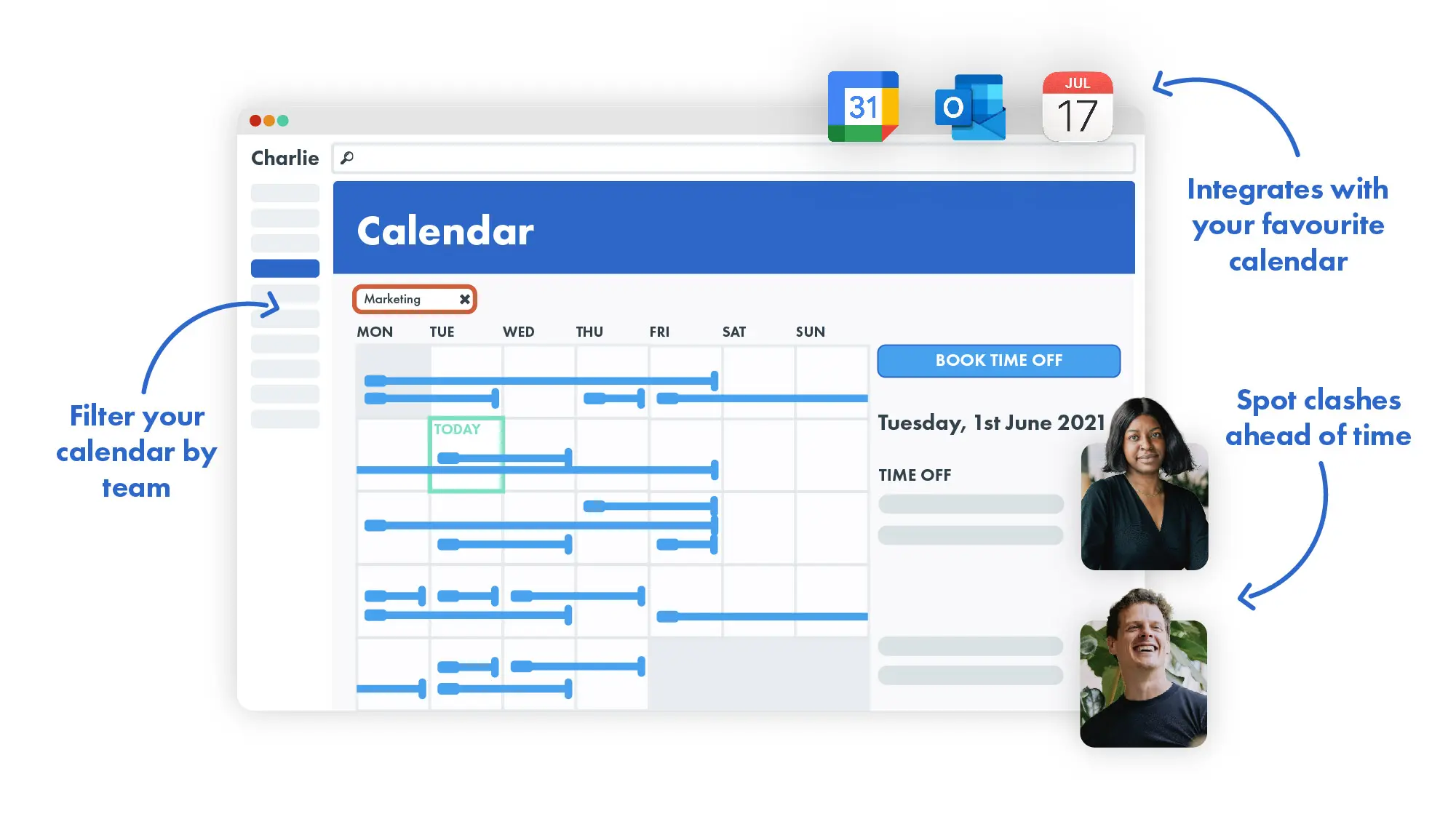What is shared parental leave? (With real-life examples)

Shared parental leave helps your team members be productive and engaged employees, and parents too.
Many new parents grapple with day-to-day challenges that force them to balance their responsibilities as a parent and as an employee.
Being a parent isn’t a solo job either, but a partnership. In the early stages of a child’s life, one or both parents might be called away to deal with child-rearing responsibilities. Shared parental leave alleviates this burden by allowing parents to share time off of work after the birth or adoption of a child.
I’ve had a hand in helping Charlie and other small businesses craft policies that reflect their company culture in a way that fits the needs of their teams. That includes teams with parents who have little ones to wrangle.
So, I’d like to offer some guidance on how to make a shared parental leave policy and walk you through the details of our own policy as well.
What is shared parental leave?
In the UK, shared parental leave is a statutory right for employed parents. It allows parents to share up to 50 weeks of leave and 37 weeks of pay after the birth or adoption of their child.
The role of primary and secondary caregivers
It used to be the case that maternity leave was the default option. Shared parental leave allows for parity in domestic work between both parents, and removes some of the burden that used to fall solely on mothers.
In other words, shared parental leave allows for a more equal distribution of caregiving responsibilities.
Flexibility and choices
One of the biggest benefits of a shared parental leave policy is that of flexibility. Parents can decide who takes shared parental leave and when.
For instance, a mother might return to work early and pass the relay baton onto the father who picks up the slack while she brings home the bacon.
Understanding statutory shared parental leave requirements in the UK
Parents in the UK are entitled to up to 52 weeks of shared parental leave. It’s important to remember though that the first two weeks are reserved for maternity leave as mandated by law.
Financial aspects
Statutory parental pay is calculated at either £172.48 a week or 90% of the employee’s weekly earnings, whichever is lower.
If you’re a generous employer, you can feel free to offer more. You can offer more shared parental leave benefits at your small business, like higher pay rates or extended leave periods.
Eligibility criteria
Who qualifies for shared parental leave? That depends on a few conditions:
- Both parents must have been employed for at least 26 weeks
- Parents must provide adequate notice to their employees, usually eight weeks before the start of their leave period
Eligibility depends on your circumstances and whether employees are birth parents or adopting parents. For the full eligibility criteria for shared parental leave, please check out the government’s website.
How we do parental and shared parental leave at Charlie
I’m proud to work at a place like Charlie that has progressive policies for things like shared parental leave. It feels good working at a company that is committed to gender equality and that goes beyond what the statutory requirements in terms of employee benefits.
Unlike traditional shared parental leave, at Charlie we’re not differentiating between primary and secondary caregivers: we’re giving both parents the same leave allowance and we’re simply calling it ‘parental leave’.
Our policy is considered more generous than the statutory shared parental leave, because both parents get the same amount of leave (there is no need to share).
However, if our team members prefer to take shared parental leave, we give them the option to do so.
Let’s take a look at our parental and shared parental leave policies, so you can take inspiration for building your own.
Check out Charlie parental leave policy here below, and read on as I analyse some key aspects.

Our parental leave: equal benefits for both parents
The Charlie parental leave policy gives the same amount of leave for both parents and makes no distinctions between the primary and secondary caregiver.
That way, parents can decide who can go on leave without any deductions or financial penalties.
Financial benefits
The Charlie parental leave policy is designed to support parents at different stages of their early parenthood:
- The first 10 weeks of parental leave are fully paid
- The following 10 weeks are paid at 50% of the employee’s full salary
- After that, there are 8 at 25% pay and 11 weeks at the statutory rate
Additional support
Every family is unique. Charlie accounts for this and provides additional support for families going through an adoption process, surrogacy, and even fertility treatments like IVF.
On top of that, if your child has a legally eligible disability, Charlie offers an additional 4 weeks at 50% pay.
Charlie wants to build an inclusive and kind company that supports its people. That extends to its parental leave policy.
The Charlie platform itself has a time off feature so that you can keep track of which parents are going on leave and when.

Our shared parental leave
Most of our team members choose to opt for our parental leave, as outlined above. However, we also give them the option to go on shared parental leave.
This may be advantageous if they are a primary caregiver and their partner’s employer has a very basic parental leave policy.
Let’s look at an example. Rebecca works at Charlie; her partner Tom works at another company where they only offer statutory paternity leave (which is two weeks). With shared parental leave, Rebecca (the primary caregiver) can give Tom some of her leave to allow him to take more time off than his employer’s statutory allowance.
Team members choosing shared parental leave at Charlie get:
- A maximum of 50 weeks of shared parental leave (Total 52 weeks, as the first 2 weeks have to be taken as maternity leave by law).
- Up to 37 weeks of Enhanced Shared Parental Pay (where they are paid the same way as in our parental leave policy above). Beyond 37 weeks, they will be paid the statutory shared parental leave.
FAQs about shared parental leave
When two parents are involved in shared parental leave, figuring out who gets what kind of pay for how long can get a bit tricky.
I’d like to offer some clarity by answering some of the most frequently asked questions about shared parental leave in the UK.
1. Can both parents take shared parental leave at the same time?
The short answer is yes.
Both parents can take leave at the same time if they wish to do so. However, the total amount of shared leave remains the same regardless.
That means if both parents go on leave at the same time, it reduces the total amount of weeks of shared parental leave they can take later.
2. What happens if an employee doesn't use all their shared parental leave?
Unused shared parental leave does not carry over after the 52 weeks following birth or adoption.
For that reason, parents need to plan out the weeks of shared parental leave available to them.
3. Are there any restrictions on how to split the leave?
The first two weeks of shared parental leave are reserved for the mother alone, according to UK employment law.
After that, shared parental leave can be split in any way parents choose, either in blocks or all at once, as long as it’s within 52 weeks.
Make a shared parental leave policy that supports your parents
Shared parental leave can be a flexible and inclusive solution to support the families and parents that make up your team. That way, they can balance their work and caregiving responsibilities and still give their all for you.
Understanding what UK law says about shared parental leave is a good first step. Charlie is trying to push the envelope and really show how making a parental and/or shared parental leave policy that values equality is not just the right thing to do, but a good business decision.
Feel ready to make your own shared parental leave policy? I or another HR advisor at Charlie can help you make your own bespoke parental leave policy that reflects the needs of your team and the core values of your business. Book a free call today.



